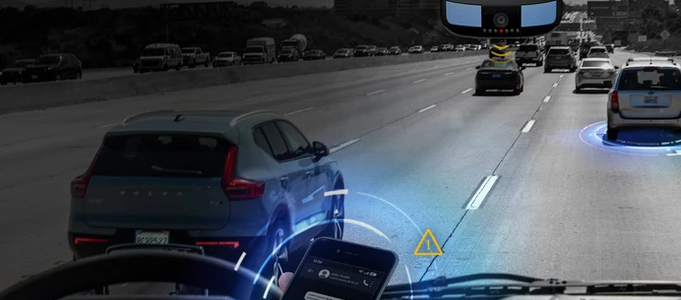
If you are like most people, as this unprecedented year comes to a close, you may be wondering “what awaits in 2021?”. Perhaps you are hoping for a sudden end to the pandemic or you are anticipating that a change in our country’s leadership will inspire a new wave of communal unification.
Given the impacts felt by COVID-19 and everything else that happened in 2020, fleets across industries are equally asking themselves hard questions as most were forced this year to navigate uncertainty and swiftly adapt to new ways of operating. This has led many to invest in fleet technology.
A recent industry study found that there was an increase of 8% in the number of fleets using GPS fleet tracking technology (from 64% in 2019 to 72% in 2020). An impressive 96% of fleets that used GPS fleet tracking software found it to be beneficial. Furthermore, 32% reported a positive return on investment (ROI) in just six months of implementing fleet tracking technology. Of all the technologies implemented by the survey respondents, in-cab video, with both front-facing and driver facing cameras, rose to the top.
As in many industries, economic and regulatory uncertainty adversely impacted fleet businesses with 44% reporting that increasing costs were a primary challenge to their daily fleet operations. That said, GPS fleet tracking had a positive effect in reversing this trend with an average of 8% seeing a decrease in fuel costs, 11% a reduction in accident costs and 10% decrease in labor costs.
Based on these finding and some of our own observations working with fleet managers in the transportation, services, government and construction businesses, here are the trends we are seeing for 2021:
-
Fleet managers will feel the pressure to manage or reduce costs which will lead them to implement a fleet management software that closely tracks comprehensive cost information throughout each vehicle’s life cycle and provides access to data that will help make smarter budget-driven decisions.
-
The power of data in business today is inescapable. This is especially true for companies reliant on fleet vehicles. With the right analytic tools, managers will be increasingly leaning on data to help generate customized reports that monitor progress, gauge performance, and help make intelligent business decisions.
-
A trend on the rise throughout the fleet industry is the use of tracking systems and telematics. As U.S. safety regulations mandate fleet tracking using electronic logging devices (ELDs), these are becoming compulsory for demonstrating compliance with rules that govern operators’ on-hours and required rest periods. Onboard telematics systems come standard in many vehicles today as fleet tracking continues to advance into 2021.
-
Budgets will be stretched in 2021 so managers will be turning to data collection and analysis to get more from their total fleet budget. Life cycle cost is a fleet maintenance metric to monitor. But as fleet vehicles become ever more specialized in 2021, more managers will be paying attention to secondary operational costs. Repairs and maintenance incur the highest costs, but smaller costs, such as idle time or inefficient routes, add up, too. Data obtained from an EAM platform will likely show where small operational changes can lead to significant savings.
-
Operators will be checking their PM balance more often in the new year. While there’s no perfect ratio of preventive vs. reactive maintenance, operators can always aim for the most uptime. Using software with advanced analytic capabilities makes it easier to monitor and assess the ideal PM ratio, especially as fleets change over time.
There is no telling what’s to come as many of the events of 2020 will continue to be felt into the new year. To ensure that fleet-reliant businesses continue to operate optimally and actually thrive in 2021, investing in fleet technology will be a secure way for them to protect themselves against an uncertain future.

